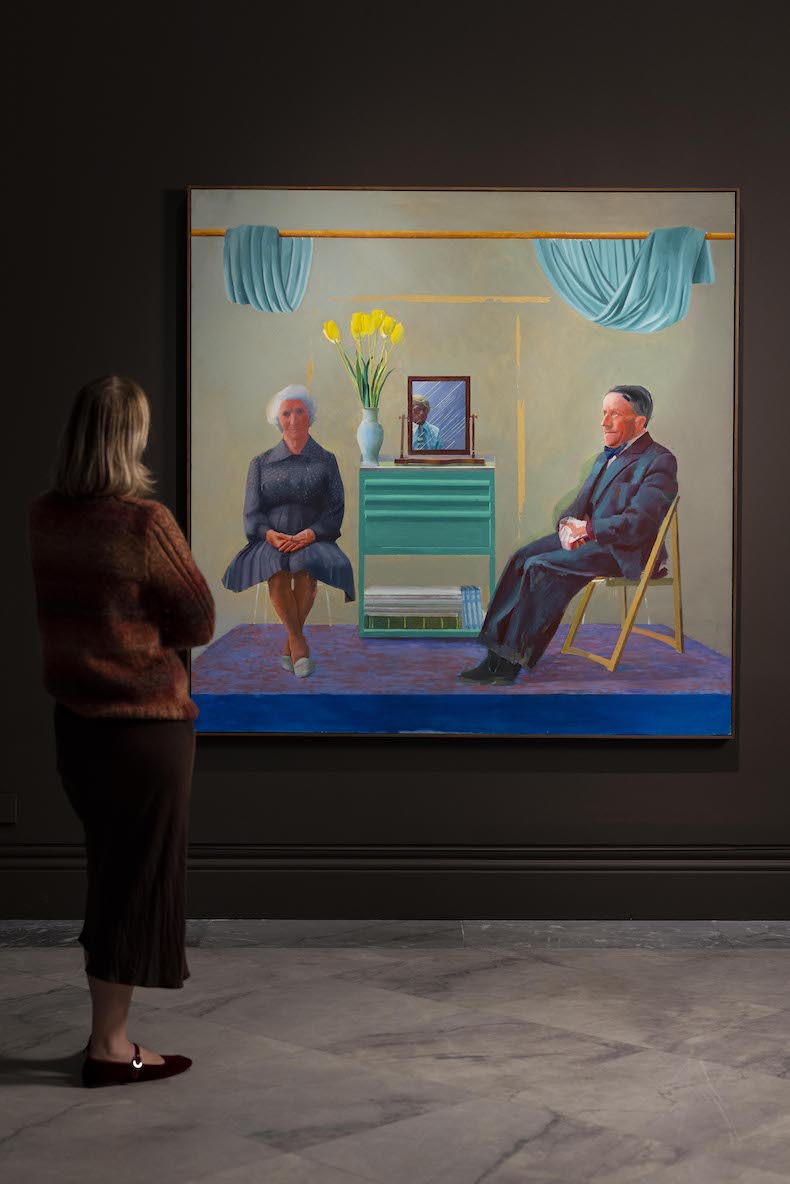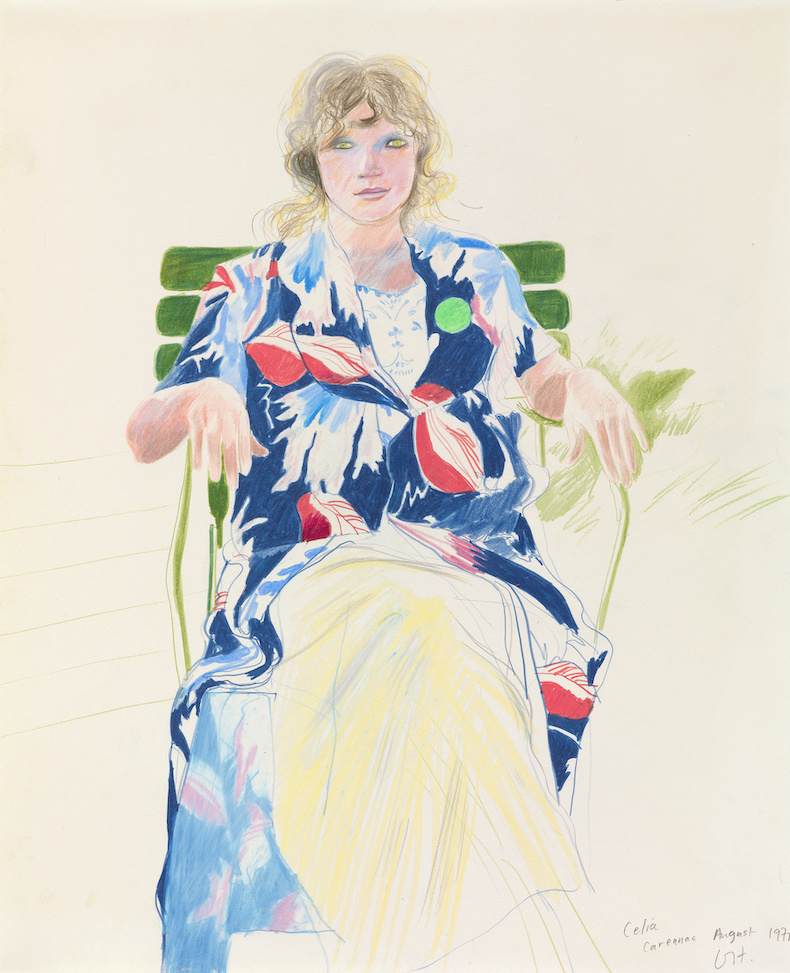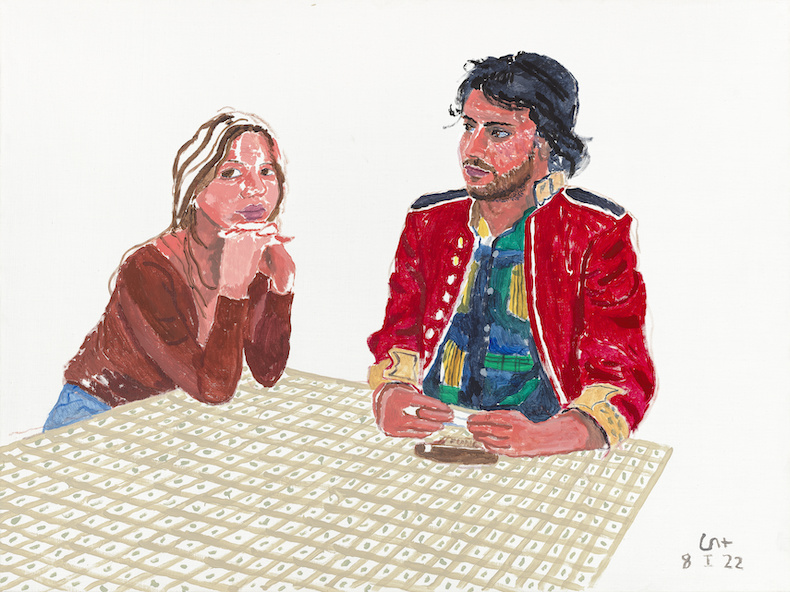‘David Hockney: Drawing from Life’ ran for only 20 days at the National Portrait Gallery in the spring of 2020 before Covid shut it down. Its revival – in a slightly expanded form – fulfils director Nicholas Cullinan’s pledge that the exhibition would return in better times. When the show was first mooted by Sarah Howgate, a senior curator at the NPG, with the suggestion that it should focus on drawings of a small group of family and friends, Hockney admitted that he felt ‘a bit exhibitioned out’. Understandably so, after some 400 solo exhibitions across his career, including relatively recent blockbusters at Tate Britain, the Metropolitan Museum of Art and the Royal Academy. Yet his initial hesitation over Howgate’s proposal, as mentioned in her Curator’s Acknowledgements, was followed by the words ‘but I do think it would be fascinating… There aren’t many people who’ve been drawing the same people for over sixty years.’
Drawing underpins all his work. It is there beneath the arresting collage with which the show begins: a self-portrait, set against a newspaper background, made in 1954 during his first year at Bradford School of Art. It also justifies the inclusion of the large painting that immediately follows, My Parents and Myself (1975) – an early version of the better known painting My Parents (1977) in the Tate. Here, 21 years on from that earlier self-portrait, his training of his eye through drawing underpins the assurance with which every element is placed, even the thin line of green shadow beneath the mirror’s wooden frame. Drawing has also emboldened his economy of means: in his depiction of his father’s suit, he equals if not outshines Sargent.
Installation view of My Parents and Myself (1975) in ‘David Hockney: Drawing from Life’ at the National Portrait Gallery. Photo: © David Parry/National Portrait Gallery

Hockney’s fascination with drawing has, at times, led to him downgrading photography. In 1981, he wrote a foreword for Jeffery Camp’s book Draw: How to Master the Art. Here he claims that drawing is much the best art form for conveying feelings about the world you see: ‘Photography just can’t compete with drawing as method of expression, as a method of feelings, as a method of telling people about things.’ He regrets that many people had begun to draw less and use cheap cameras more: ‘There are areas of experience being completely lost to them.’
Yet he himself turned to the camera around this time, taking a semi-cubist approach to his subjects. One of several such works in this exhibition is the chromogenic print photocollage My Mother, Bolton Abbey, Yorkshire, Nov. 1982. Using 35mm film he could work fast, taking many images in a short space of time, cutting them up and allowing some to overlap, thereby suggesting multiple viewpoints and the passing of time. Howgate, in her catalogue essay on the artist’s work, seeks to persuade us that it displays a ‘multi-layered personal and psychological portrait that both captures the relationship between mother and son and is a reflection on mortality and our place in the world.’ Perhaps it does – everything springs from the tips of the artist’s brogues, which appear at the bottom of the work.
Celia, Carennac, August 1971 (1971), David Hockney. The David Hockney Foundation. Photo: Richard Schmidt; © David Hockney

His mother is one of the five people on whom this exhibition is centred, alongside the artist himself. The others are long-standing friends or lovers, all of whom remain significant figures in Hockney’s life: the curator Gregory Evans, the master printer Maurice Payne, and the fashion designer Celia Birtwell, this last sitter the subject of the most varied and engaging images. Witness the witty shorthand in the Matisse-like Celia Amused (1979) and the affectionate dense etching that has created Soft Celia (1998). Close relationships are one of the key themes in this show, and we are often made aware of Hockney’s admiration for Rembrandt and how much he can pack into a drawn or etched portrait.
Lucie-Lune Lambouley and Louis-Martin Lambouley, 8th January 2022 (2022), David Hockney. Photo: Jonathan Wilkinson; © David Hockney

Whether his brilliant manipulation of pen-and-ink line drawings, or his seductive use of coloured pencils, there is much here that upholds Hockey’s reputation for supreme draughtsmanship. The series of 33 portraits of familiar and unfamiliar visitors who happened to pass through his Normandy studio between 2021 and 2022, fills the last room of this show. They are painted with slow-drying acrylics with no under-drawing and were confined to two or three sittings. They are less commanding stylistically than much of his earlier work but are nevertheless fascinating for Hockney’s clever use of clothing to catch and convey character. If some lack urgency, some – such as the head of David Juda – shine out with affection.
Hockney has always moved with the times and taken to new technology quicker than many of his peers. He likes making films and drawing digitally, yet, as he points out, it is still he who makes the marks: drawing remains at the centre of his creativity. It is a daily habit, almost like breathing. A much younger Hockney once wrote: ‘Drawing helps put your thoughts in order. It naturally gives you a sense of harmony, of order.’ For some years now his bespoke suits have been made with pockets large enough for sketchbooks, iPad and drawing tools. While remaining a fashion icon, he has become a walking studio.
Self Portrait, 22nd November 2021 (2021), David Hockney. Photo: Jonathan Wilkinson; © David Hockney

Another enriching ingredient of this show is the artist’s plundering of the past, especially in relation to work by Picasso, Ingres and Rembrandt. And how moving it is, in one of the two homages to Picasso created after his death, to see an image of Hockney himself seated opposite Picasso, looking directly at him and posing as his model. The conclusion he offers us, in his lively conversation with Howgate, is: ‘Every artist needs to use the hand, the eye and the heart; two won’t do. In Rembrandt you get three every time.’
‘David Hockney: Drawing from Life’ is at the National Portrait Gallery, London until 21 January 2024.



